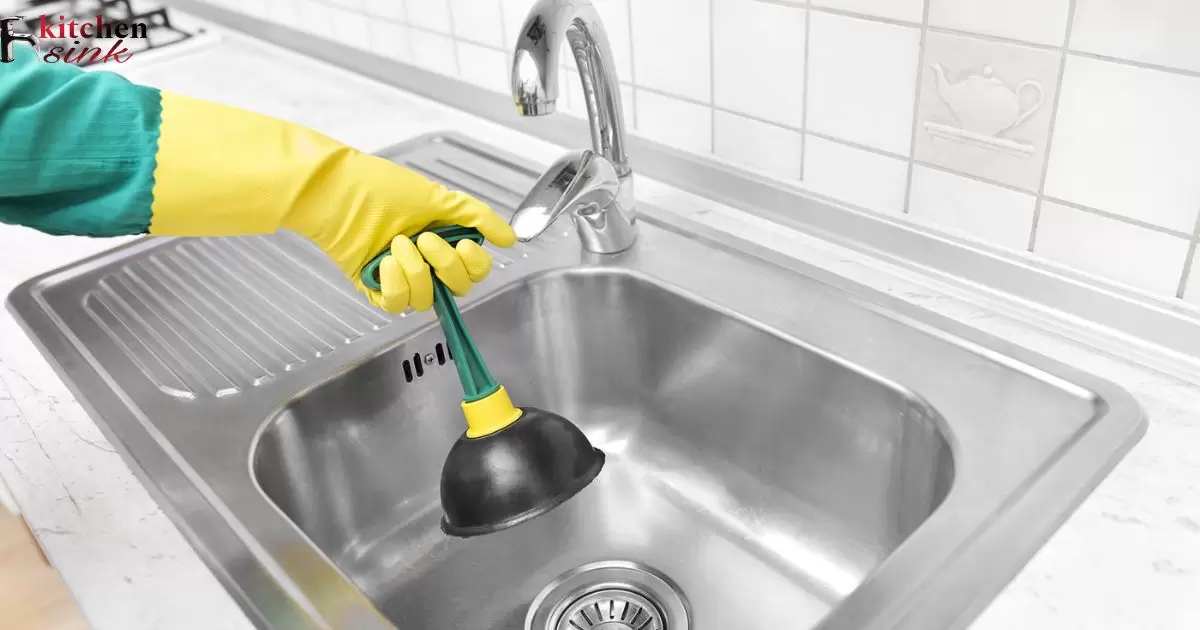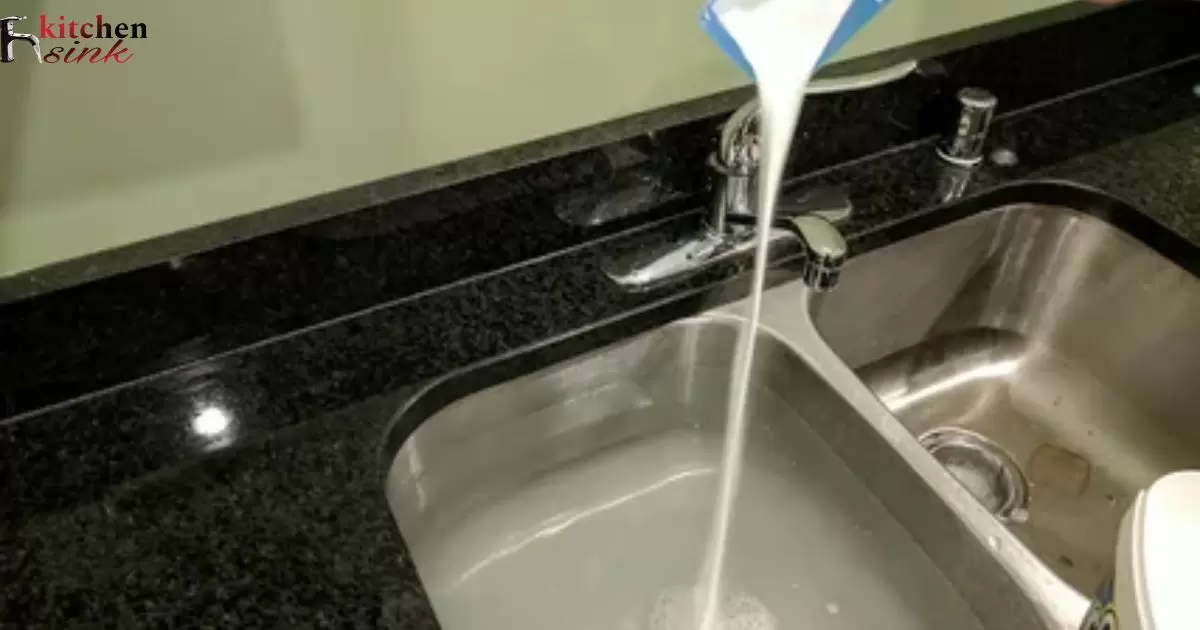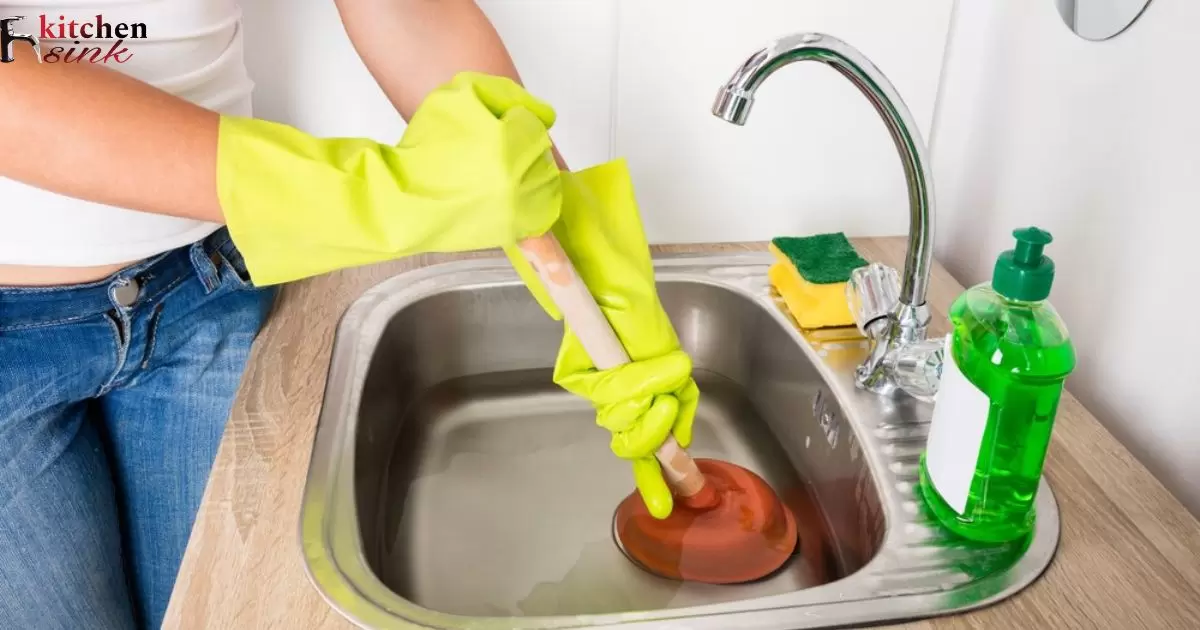An airlock in a kitchen sink drain refers to a pocket of air that blocks water from properly draining down the pipes. This can happen when the piping forms a loop that traps air, preventing water from flowing. It leads to gurgling sounds or slow draining water in the sink.
How to fix an airlock in a kitchen sink drain? This common plumbing problem can often be easily solved at home without a plumber. Unblocking the air pocket to allow water to flow again takes some simple maneuvers anyone can do.
There are a few methods to try at home to dislodge an airlock and get water flowing freely down the drain again. This includes using a plunger to plunge the drain, pouring hot water down the drain, using baking soda and vinegar, and using a drain snake to loosen debris. Persistence is key, as it may take a few tries to get the air pocket to move. But in most standard kitchen sink clogs, an airlock can be fixed with basic supplies and a little elbow grease.
Fix Airlock In Kitchen Sink Drain
The most common fixes for an airlock in a kitchen sink drain are plunging the drain, using a drain snake/auger to clear debris and break up the airlock, checking and clearing vent pipes, and drilling a relief hole if the airlock persists. Plunging with hot water can help dislodge the airlock. A drain snake pushed through the pipes can also break it up.
Checking roof vent pipes and clearing any blockages can prevent airlocks from forming. As a last resort, drilling a small relief hole in the discharge pipe of the sink drain can allow the airlock to escape. Disinfect Kitchen Sink Without Bleach by using natural cleaners like baking soda, vinegar, lemon juice, and essential oils instead of harsh chemicals. These can sanitize and deodorize just as effectively.
Causes An Airlock In A Kitchen Sink Drain
Too much water goes down drain at once. This traps air bubbles.
Vent pipe gets blocked. Air cannot escape.
Garbage disposal used without enough water flow. Air gets trapped with food scraps.
Mineral buildup or debris narrows pipes over time. Less room for air and water to drain.
| Cause | Explanation |
| Excess water | Too much water traps air bubbles |
| Blocked vent | Air can’t escape |
| Disposal without water | Air gets trapped with food |
| Narrow pipes | Less room for airflow |
The key causes are letting too much water go down at once, issues with the venting that allow air to escape, using the garbage disposal without enough water flow, and narrow pipes over time due to mineral deposits or debris. Addressing these root causes can help prevent frustrating airlocks.
Airlock Form In A Kitchen Sink Drain Pipe
An airlock forms when water draining out of the sink drain displaces air in the pipes, but this air has no place to escape due to a partial clog or blockage further down the pipe. The air bubbles collect together into a pocket that blocks water from draining properly. As more water tries to drain, more air gets pushed ahead of it and adds to the airlock. Venting issues can also cause airlocks by not allowing air to easily flow out as water flows down the drain.
Signs Of An Airlock In A Kitchen Sink Drain
Signs of an airlock in a kitchen sink drain include water draining very slowly or not at all, gurgling sounds coming from the drain, the sink needing to be plunged multiple times to temporarily fix the drainage, bad smells coming from the drain, and reduced water pressure when using the faucet. These symptoms come and go because the airlock forms and breaks up temporarily, only to form again when more water tries to drain.
Confirm If There Is An Airlock In My Kitchen Sink Drain
To confirm an airlock, fill up the sink with water and then try to drain it. If it drains very slowly with gurgling noises, stops draining completely before the sink empties, or needs plunging to start draining again, then an airlock is likely present. Checking if water drains properly in both sides of a divided sink can help narrow down the location. Also listening with your ear over the drain as someone else runs the faucet can let you hear air bubbles confirming the airlock.
Unclog A Kitchen Sink Drain With An Airlock
To unclog a kitchen sink drain with an airlock, first try plunging vigorously while running hot water to force the air bubble out. You can also try blasting water from both the hot and cold taps at once after removing the aerator on the higher pressure faucet. This pushes a strong surge of water to dislodge the airlock. If that doesn’t work, use a drain snake or remove the P-trap under the sink to manually clear any blockages trapping the air.
Plunger To Fix An Airlock In A Kitchen Sink
A plunger can be an effective first step to fix an airlock in a kitchen sink drain. Plunging creates pressure and turbulence to dislodge the trapped air bubble. Plunge forcefully while running hot water to maximize effectiveness. If plunging fails to clear the airlock, you can try using a drain snake or chemical drain cleaners before calling a plumber.
Caustic Drain Cleaner Effective For Fixing Airlocks In Kitchen Drains
Caustic chemical drain cleaners can help clear minor blockages that cause airlocks. However, they carry risks like skin burns or toxic fumes, so caution is needed. They may dissolve hair/grease clogs trapping air. But for stubborn airlocks or serious clogs, a plumber’s mechanical clearing methods are generally safer and more reliable. Only use caustic cleaners if plunging/snaking fails and as a last resort before calling a plumber.
Plumber To Fix An Airlock In My Kitchen Sink Drain
You should call a plumber if an airlock persists after trying plunging, chemical drain cleaners, snaking the drain, and removing the P-trap. A serious underlying blockage is likely trapping the air if DIY methods fail. Signs you need professional help include foul sewage odors, leaked water, recurring airlocks, or completely stopped drains. The plumber has specialized tools and expertise to fully clear drain obstructions.
Methods Do Plumbers Use To Fix Airlocks In Kitchen Sink Drains
5 easy short methods plumbers use to fix airlocks in kitchen sink drains:
- Snake the drain to clear clogs
- Install a cheater vent for air flow
- Replace old pipes with wider pipes
- Clear debris from vent pipes
- Blast out airlocks with hot and cold water
The key methods focus on clearing any clogs, allowing proper airflow, upgrading narrow pipes, ensuring vent pipes are not blocked, and using a dual tap approach to blast out trapped air bubbles. Employing one or more of these methods can typically resolve frustrating airlocks in kitchen sink drains.
Prevent Airlocks From Forming In My Kitchen Sink Drain
To prevent airlocks, avoid letting too much water accumulate in the sink at once. Filling up both sides of a double sink or letting lots of soapy water go down the drain can cause air bubbles to get trapped, leading to slow drainage or gurgling sounds. It’s best to drain smaller amounts of water at a time. You can also pour some baking soda and vinegar down the drain weekly to break up debris and keep things flowing smoothly.
Proper Venting Prevent Airlocks In Kitchen Sink Drains
Proper venting is important for allowing air to enter the drain system so water can flow out freely. Vents equalize the pressure when water goes down the drain, preventing air bubbles from getting trapped. If your drain gets clogged despite having a vent, there may be a blockage in the pipes. A plumber can snake the drain to clear any debris. You can also try blasting the clog out with hot and cold water.
Install A Cheater Vent To Prevent Airlocks In My Kitchen Drain
A cheater vent, also called an air admittance valve, allows air to enter the plumbing system while preventing sewer gases from escaping. This equalizes pressure similarly to a standard vent. If your drain lacks proper venting, adding a cheater vent can help prevent frustrating airlocks. It’s an affordable, easy-to-install solution. However, you may still need to snake or blast out any existing clogs after installation.
Clean My Kitchen Sink Drain To Avoid Airlocks
To prevent airlocks, it’s best to clean your kitchen sink drain at least once a month. Pour a mix of baking soda, vinegar, and hot water down the drain to break up grease, food particles, soap scum, and other gunk. You can also occasionally use an enzyme drain cleaner or mechanical drain snake to remove buildup. Avoid pouring fats, oils, and large food scraps down the drain to help prevent clogs.
What Plumbing Modifications Prevent Airlocks In Kitchen Sink Drains?
Besides adding a vent or cheater vent, using newer plumbing fixtures with a larger diameter can improve drainage and reduce airlocks. Old pipes tend to accumulate mineral deposits and debris over time, narrowing the opening. Upgrading to wider PVC pipes allows more air and water to flow freely. You can also install a garbage disposal to grind up food particles before they go down the drain. Just be sure to run plenty of water when using the disposal.
Frequently Asked Question
Why Is My Kitchen Sink Draining Slowly?
Your sink may have an airlock blocking proper drainage.
What Causes An Airlock In A Sink Drain?
An airlock happens when air gets trapped in the pipes due to a partial clog.
How Can I Get Rid Of An Airlock In My Kitchen Sink?
Plunging the drain or using a drain snake can dislodge an airlock.
Why Does My Kitchen Sink Gurgle When Draining?
Gurgling noises usually indicate the presence of an airlock in the drain.
How Do I Confirm There’s An Airlock In My Sink Drain?
If plunging makes the water start draining again, there is likely an airlock.
Conclusion
Fixing an airlock in a kitchen sink drain is usually straightforward with some simple DIY methods. The first things to try are plunging the drain while running hot water, or blasting the drain with both hot and cold taps at once. This creates turbulence and pressure to dislodge the trapped air bubble. If plunging and blast techniques fail, use a drain snake or remove the P-trap to manually clear any clogs trapping the air.
Caustic chemical drain cleaners can also help dissolve blockages, but with caution as they can damage pipes or cause fumes/burns. If an airlock persists despite trying plunging, snaking, P-trap removal, and chemical cleaners, it’s best to call a professional plumber.
Plumbers have specialized augers, jetters and cameras to thoroughly inspect drains and pinpoint stubborn clogs. They can also access main sewer lines if needed. Damaged sections of pipe may need replacement to fix the underlying issue causing recurring airlocks. Overall, a few simple DIY methods can often clear out a kitchen sink airlock before resorting to a plumber.



